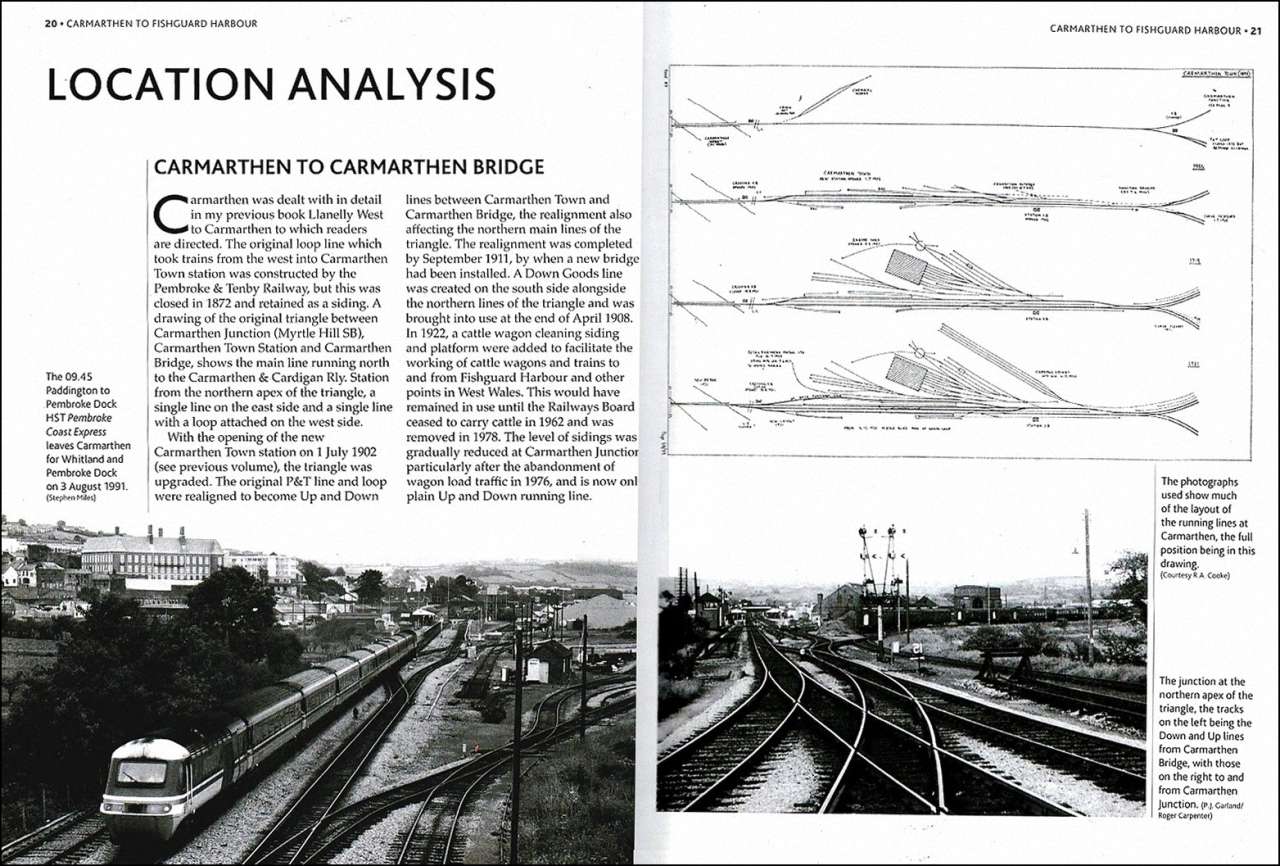Published in November 2021, Carmarthen to Fishguard Harbour is the latest book in the West Wales Railways series from publishers Pen & Sword.
Written by former railwayman John Hodge and published by Pen & Sword in November 2021, this hardback book measures around 27.94 cm x 21.59 cm, has 216 pages, 54 colour and 366 black and white illustrations, and maps. It has a published price of £30, and at the time of writing it can be obtained online from Amazon for around £27. The quality of the finished product is impeccable.
This book continues the author's excellent series of books on West Wales Railways, following on from his volume on the line from Llanelly West to Carmarthen published in April 2020, which he has since followed up with volumes on the Whitland to Pembroke Dock line published in April this year and the Milford Haven and Neyland branches published last July.
This volume covers the important section of the West Wales main line between Carmarthen and the line's terminus at Fishguard Harbour, which in 1906 replaced New Milford (later Neyland) as the line's terminus.
The preliminary pages include a useful map depicting the location of each station, followed by an introduction describing the development of Fishguard Harbour as a transatlantic port, and how it changed after the First World War. That is followed by a brief chapter on the milk traffic that originated at Whitland and Carmarthen, which is especially interesting as it is perhaps less familiar than the milk trains that used to run from Hemyock near Taunton to Kensington Olympia. That is followed by a chapter on West Wales fish traffic which, compared with the block trains that used to run on the East Coast Main Line, are relatively unknown.
A summary of each station's history and infrastructure follows in a section that the author calls “Location Analysis”. A large and varied selection of photographs is included for each location, whilst Whitland, being the main intermediate station on the line, merits an extra large chapter with nearly 100 photographs. Of special interest is an Appendix that lists the surprisingly large number of departures from Whitland in the summer of 1957.
The main responsibility for locomotives on the line was Goodwick engine shed at Fishguard. The author has done well to track down detailed descriptions of the shed's allocations and workings through the decades from its opening in 1906 to 1960.
The sketch maps seen below show four stages in the evolution of Carmarthen Town in the years 1893, 1904, 1919 and 1931. Unfortunately, the text is so small that it requires a magnifying glass to read. The chapter on Whitland has similar layout diagrams from 1875, 1900, 1950, 1972, and 1981, but again the supporting text is too small to be really useful.

A minor criticism is that each page has a heading of the book's title instead of the more reader-friendly chapter title as seen in the pages below taken from the Whitland chapter. These also show what would be unusual sights elsewhere, but here they seem to be everyday scenes, with freight trains being double-headed by tank engines.
With nearly 100 photographs the author has done us proud with his coverage of Whitland. Here, in comparison with the double-headed freight trains seen on the previous pages, are views taken in 2003; the Class 37s are no longer regular visitors to the line.
Many of the stations on the line seem to be over-engineered for the populations that they served, none more so than Clarbeston Road seen below where the village of Clarbeston that it serves had a population of 318 in the 1911 census.
As Fishguard Harbour is the end of the line the author has justifiably provided excellent coverage of the complex, especially with the scenes below showing the proximity of the station to the harbour.
In summary, this is another impressive volume from John Hodge which should set the standard for books describing particular railway lines. There is an impressive amount of detail about each station and halt along the line, together with notes of any private sidings that once existed. The numerous photographs are mainly of the steam era but with some modern images as the line is still very much in use to this day, and almost without exception their reproduction is top class. A superlative volume that will give hours of enjoyment regardless of whether the reader has ever travelled along the line. A delight for those interested in Welsh railways and strongly recommended.
The book is available to purchase from Amazon and from Pen & Sword.
We would like to thank Pen & Sword for providing RailAdvent with a copy of the book for review.
17/10 22 The large ‘A36′ headboard on the front of the loco’ shown on John Hodges’ book seems typical of the GWR. What does it identify please ?